The Samsung Galaxy Note5 and Galaxy S6 edge+ Review
by Joshua Ho on October 2, 2015 8:00 AM ESTDisplay
With the rise of smartphones and tablets, the display has become one of the most important aspects of a mobile device as it’s the primary mode of interaction. However, throughout computing the display has generally had relatively little attention. People might have talked about resolution, size, and latency, but the discourse was vague at best. In order to really understand displays, it’s important to discuss a number of factors that affect display quality and the underlying design of the display. These factors range from subpixel arrangement to TFT structure and various emitter materials. With traditional reviewing methods, it’s often difficult to say one way or another whether one display is “better” than another. While simple metrics like maximum brightness can be compared in a relative manner, it’s hard to say whether one has better colors or higher static contrast. In order to test these metrics, we turn to objective measurements from devices like X-Rite’s i1Pro2 spectrophotometer and i1Display Pro colorimeter. In order to acquire the data from these devices and present it in a usable manner, we use SpectraCal’s CalMAN 5 with a custom workflow.
Under the microscope and based upon some quick viewing angle tests, subjectively the Galaxy Note5 display looks and feels like a bigger version of the Galaxy S6 display. Viewing angles for some angles feels like the display is almost painted on to the glass below, but some odd interference effects with viewing angle changes breaks the illusion to some extent. In the case of the S6 edge+, the curved edges of the display cause a noticeable shift in luminance when looking at the edge compared to the center of the display, which also causes an odd green shift which is probably due to the RGBG subpixel layout. I suspect the best LCDs will still be better at the “painted to the glass” illusion for the near future. This isn’t a huge deal, but it is a noticeable difference.
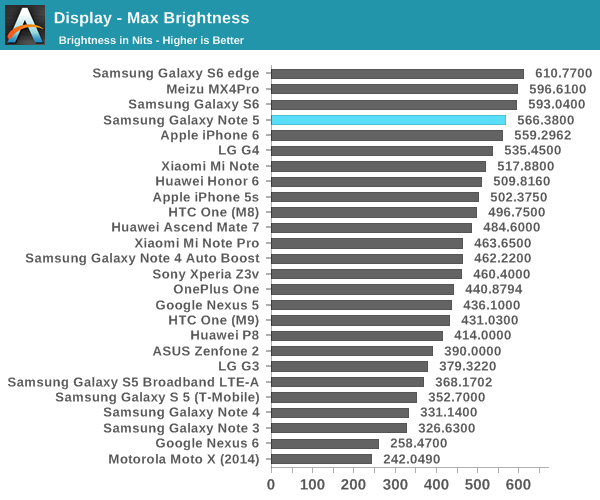
Moving on to our brightness testing, we can see that the Galaxy Note5 delivers a healthy improvement over the Galaxy Note 4 generation of AMOLED, but it isn’t quite at the same level as the Galaxy S6. It isn’t clear why this is the case, but I suspect this is related to longevity and other concerns outside of brightness. Meanwhile the use of OLED means that black levels are perfect and contrast remains solely determined by the lighting of the room and the reflectance of the display, which is similar to most other smartphones.
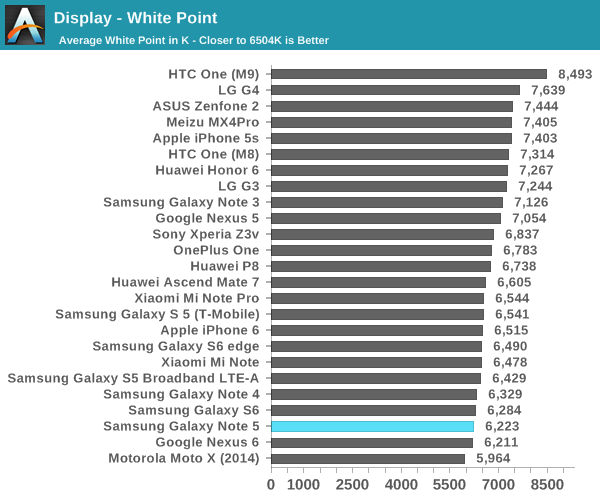
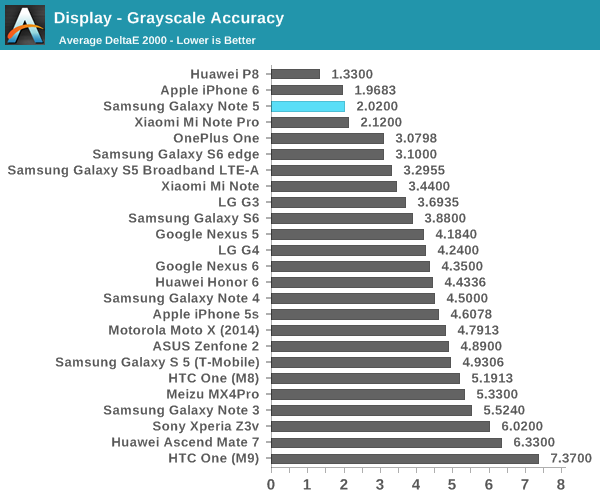
In our standard grayscale testing, the Note5 delivers acceptable color accuracy but it seems that the Basic screen mode tends towards a warm color balance. I suspect this helps with power efficiency, as blue in general requires more power to achieve the same level of luminance. Other than this slightly warm white balance, the grayscale accuracy doesn’t have any significant errors. This means accuracy ends up very good - certainly below our threshold for noticable errors - especially in comparison to the Galaxy Note 4 which had some noticeable problems with green tint on some units.
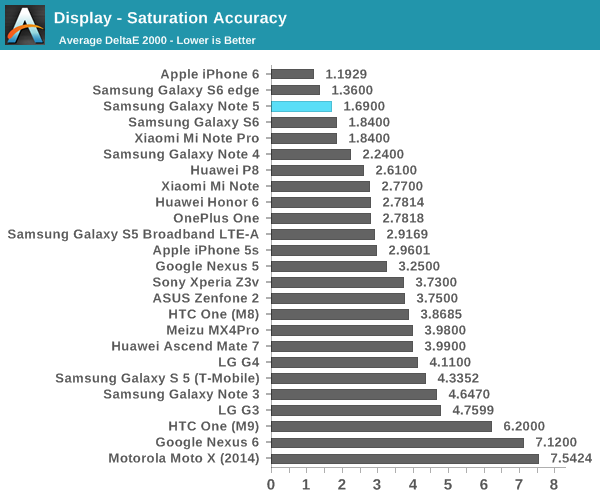
In our saturation test, Samsung does well enough that there’s really nothing to talk about because there's so little wrong here. You could argue that magenta is a bit warm on our review unit, but the difference is too small to be worth talking about. Error on average is going to be hard to spot unless you have a flawless reference monitor to compare against.
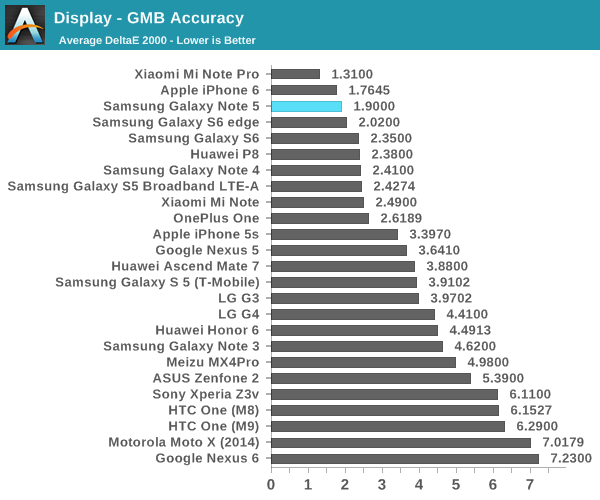
In the GMB ColorChecker test, Samsung continues to show a strong performance when looking at various hues that are commonly found in consumer content such as movies and camera photos. There’s a slight red shift on some of the tested hues, but the error is so minor I don’t notice that any problems here.
Overall, the Galaxy Note5 and Galaxy S6 edge+ both have an incredible display. The Galaxy S6 edge+ does have some problems with viewing angle shifts by virtue of the curved display, but this is effectively unavoidable given the subpixel layout and the radius of curvature. With this generation of AMOLED, Samsung has definitely equaled the best LCDs on the market. I suspect within the next year or two it will be inevitable that Samsung AMOLED will be clearly superior to even the best LCDs. However, without other OLED suppliers that can provide similar quality and cost I suspect OEM adoption will continue to be limited.



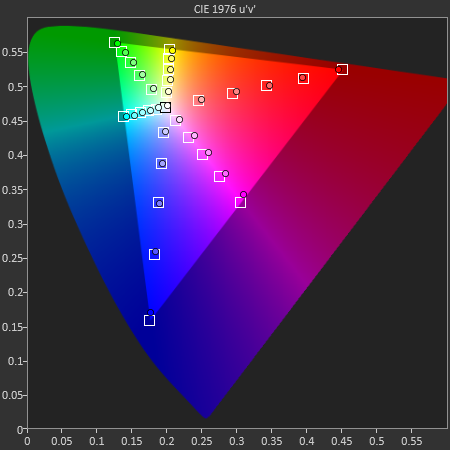
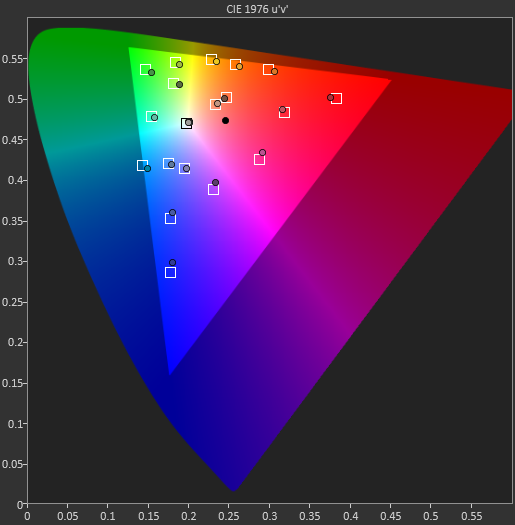








225 Comments
View All Comments
osxandwindows - Saturday, October 24, 2015 - link
People don't buy the iPhone because of that.You must be one your self to call people who by them a sheep.
lucam - Friday, October 2, 2015 - link
Why you haven't add the iPhone 6s results? Are you still updating the bench?Ryan Smith - Friday, October 2, 2015 - link
The iPhone 6s is still being reviewed. This was actually completed ahead of the 6s launch, though we had to hold off on publishing it for a few days.lucam - Friday, October 2, 2015 - link
Fair enough, thanks.harrietpubman - Friday, October 2, 2015 - link
Is there any timeline for when the 6s/6s+ review will be completed and published? Next week perhaps?Kuzi - Friday, October 2, 2015 - link
Their Apple overlords ordered iAnandtech to hold off publishing the Note 5/Edge 6 + review until iPhone6S/6S+ are released as to not jeopardize their sales.ws3 - Friday, October 2, 2015 - link
If that were true then their Apple overlords would also have ordered them to include the iPhone 6s benchmark results to show the Exynos 7420 being crushed by the A9. Since that didn't happen, your assertion is wrong.Kuzi - Friday, October 2, 2015 - link
They did just that few days ago by showing preliminary iPhone 6S benchmarks.A9 GPU is much faster yes, but CPU is faster only on single/dual apps/benchmarks. Android utilizes quad-cores when running apps as shown on Anandtech last month, so CPU performance for exynos 7420 or Snapdragon 810 should be able to match or beat that of the A9.
tipoo - Friday, October 2, 2015 - link
Android uses 8 cores well - that article also showed apps themselves don't. Games and such which need the performance most, usually don't use more than 3-4, even if Android is good at using 8.Morawka - Friday, October 2, 2015 - link
because most arm soc's never use 8 cores all at once.. it's big.Little.. 4 core for high performance, then 4 core for mundane task